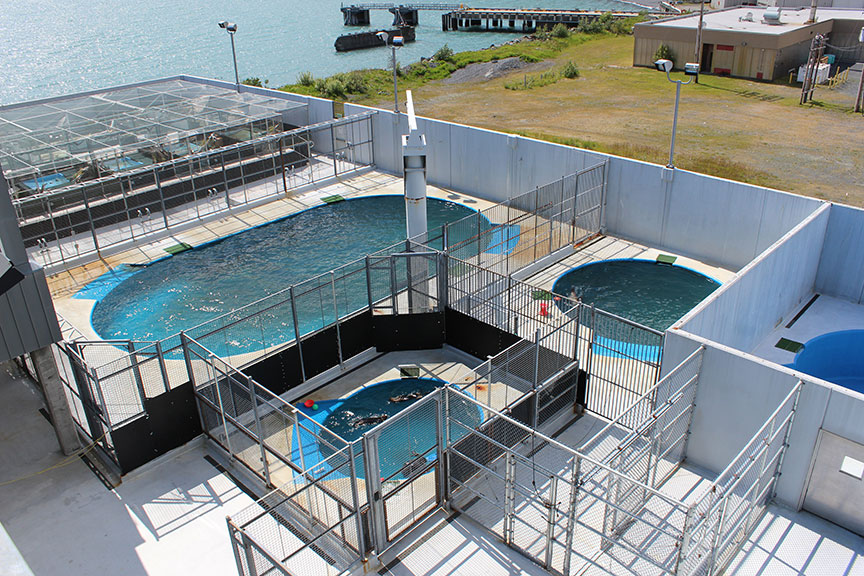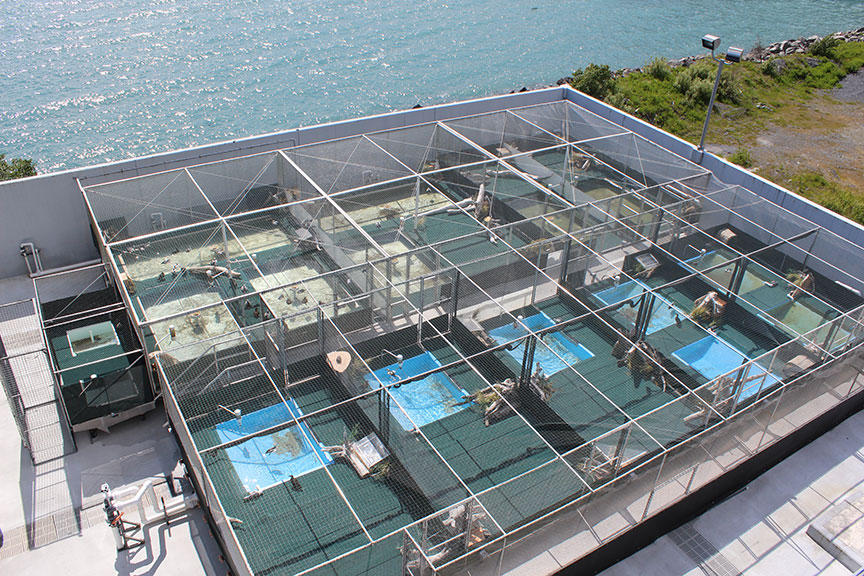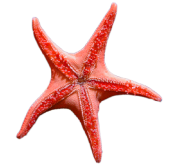Overview
Our Science Mission
The overall goal of our Science Program is to develop an understanding of the role of marine mammals, birds and fish in the arctic and subarctic marine ecosystems, and to generate scientific knowledge relevant to resource management and policy. Our projects focus on Alaska marine life and environments, but reach globally with international collaborations. The Center’s unique geographic location, marine cold water research facilities, live animal collections, and specialized staff allows us to use a combination of experimental and field research to:
- Investigate physiological and ecological processes affecting marine animal population dynamics.
- Conduct controlled experiments to understand factors affecting reproductive success and fitness in marine species.
- Monitor marine animal responses to environmental variability and stressors.
- Evaluate human impacts on our marine environment and animal populations.
- Develop tools to support recovery and restoration of marine resources.
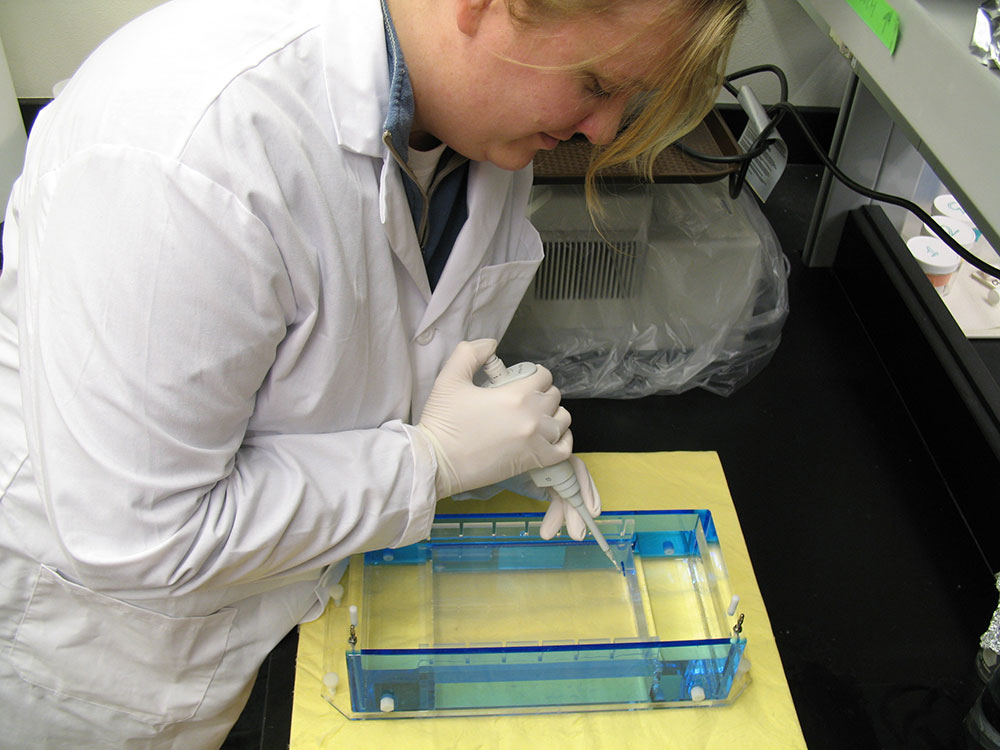

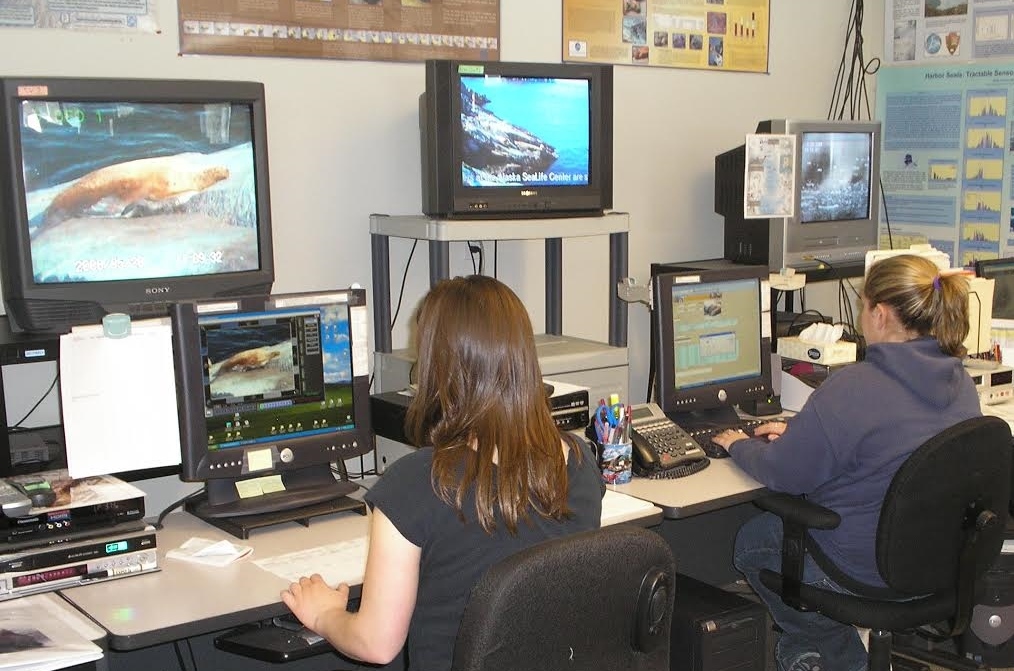
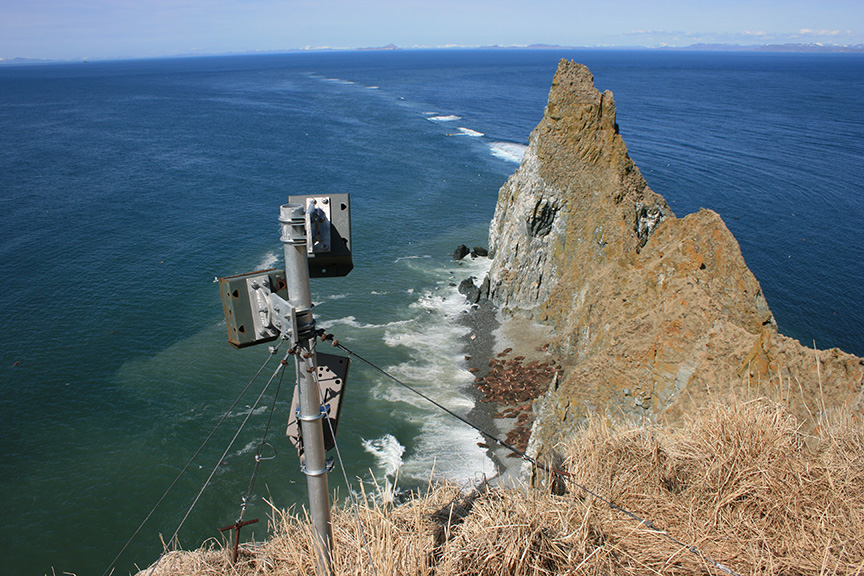
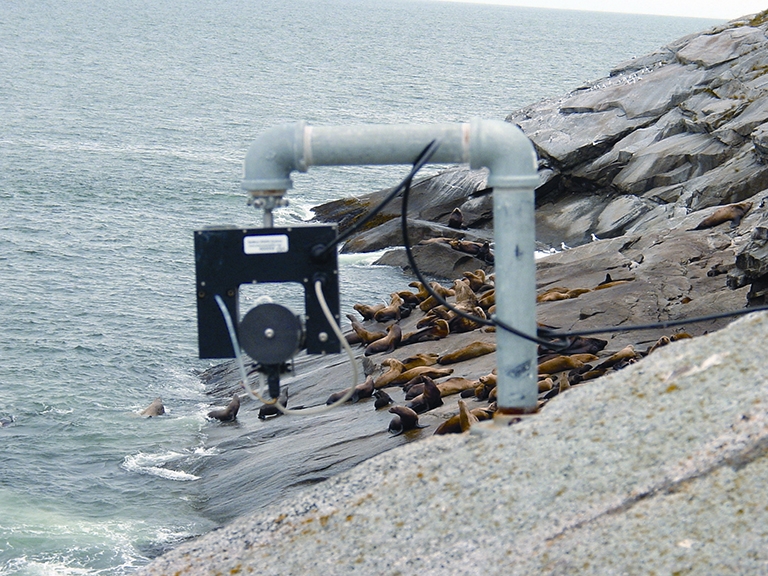
Staff and Facilities
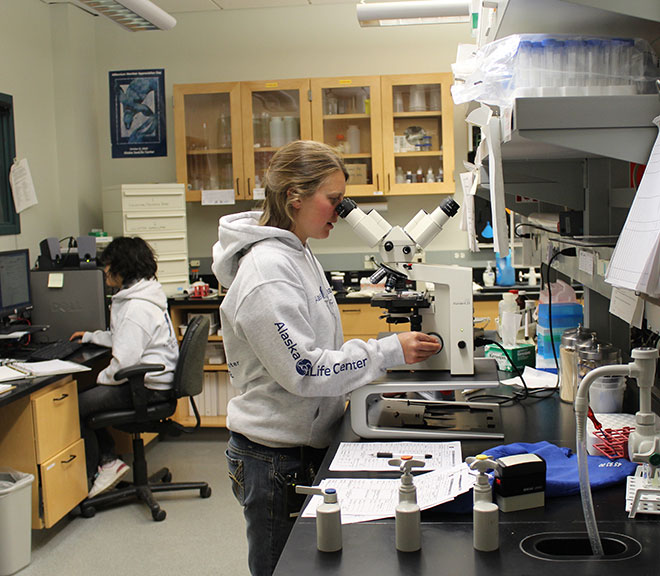
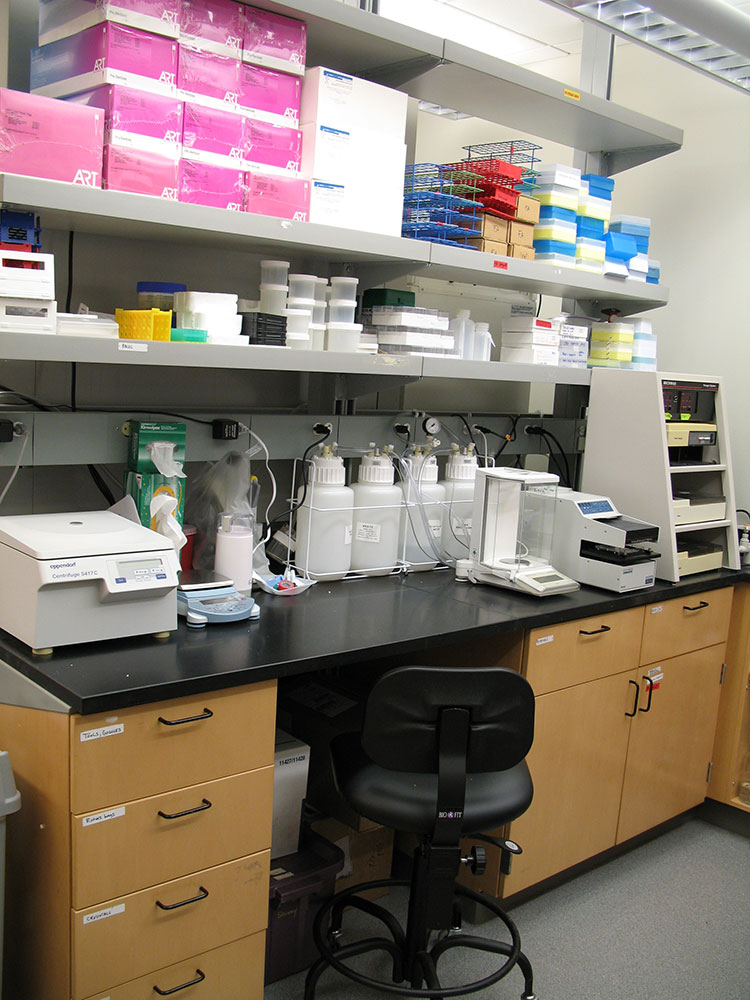
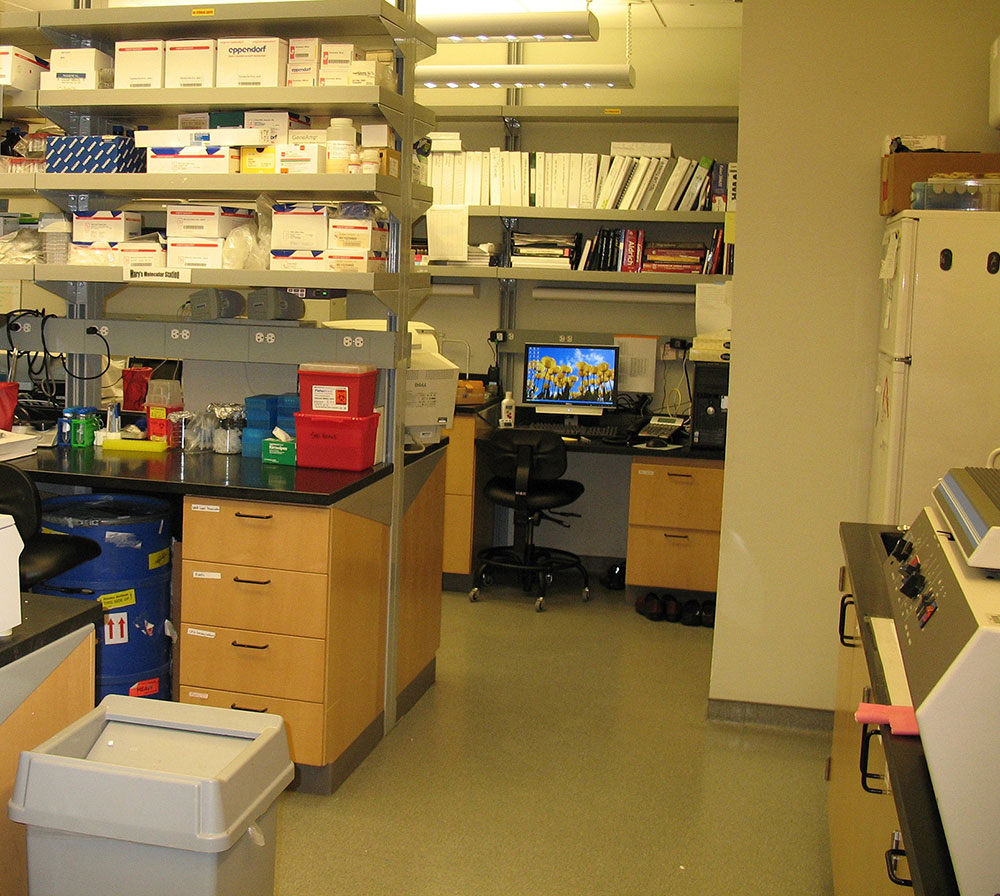
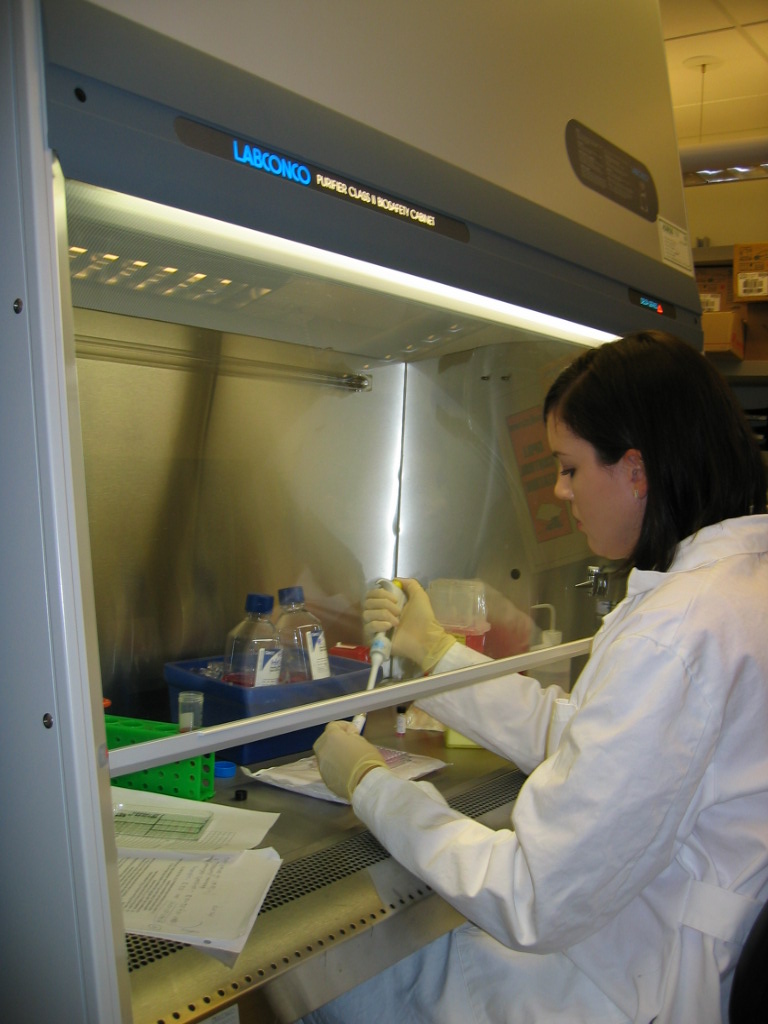
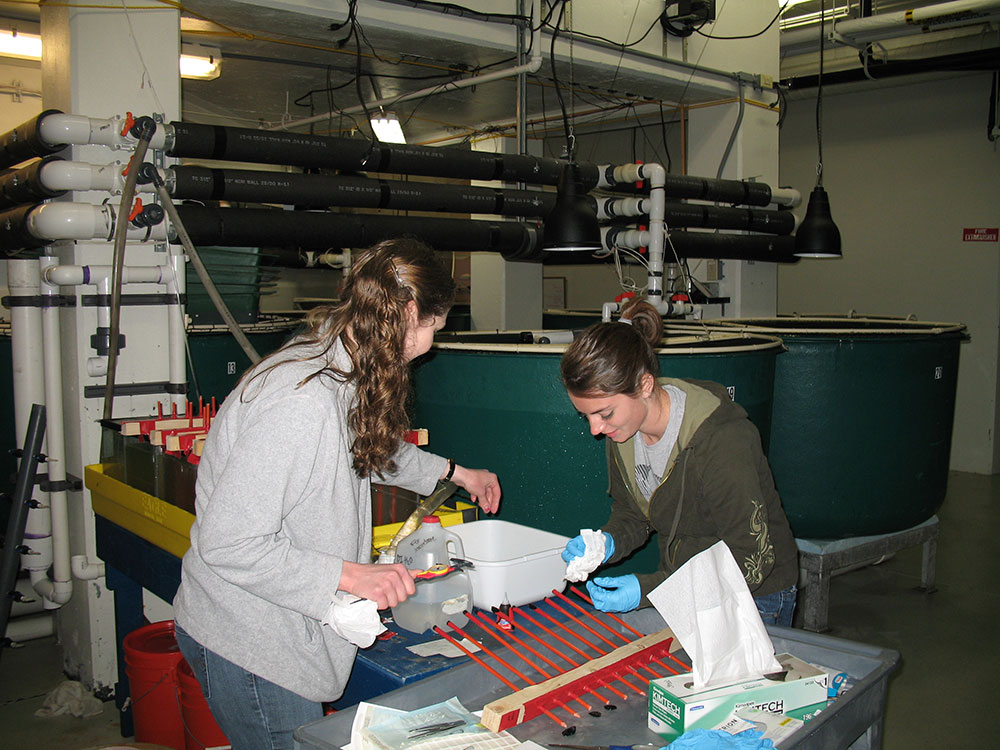
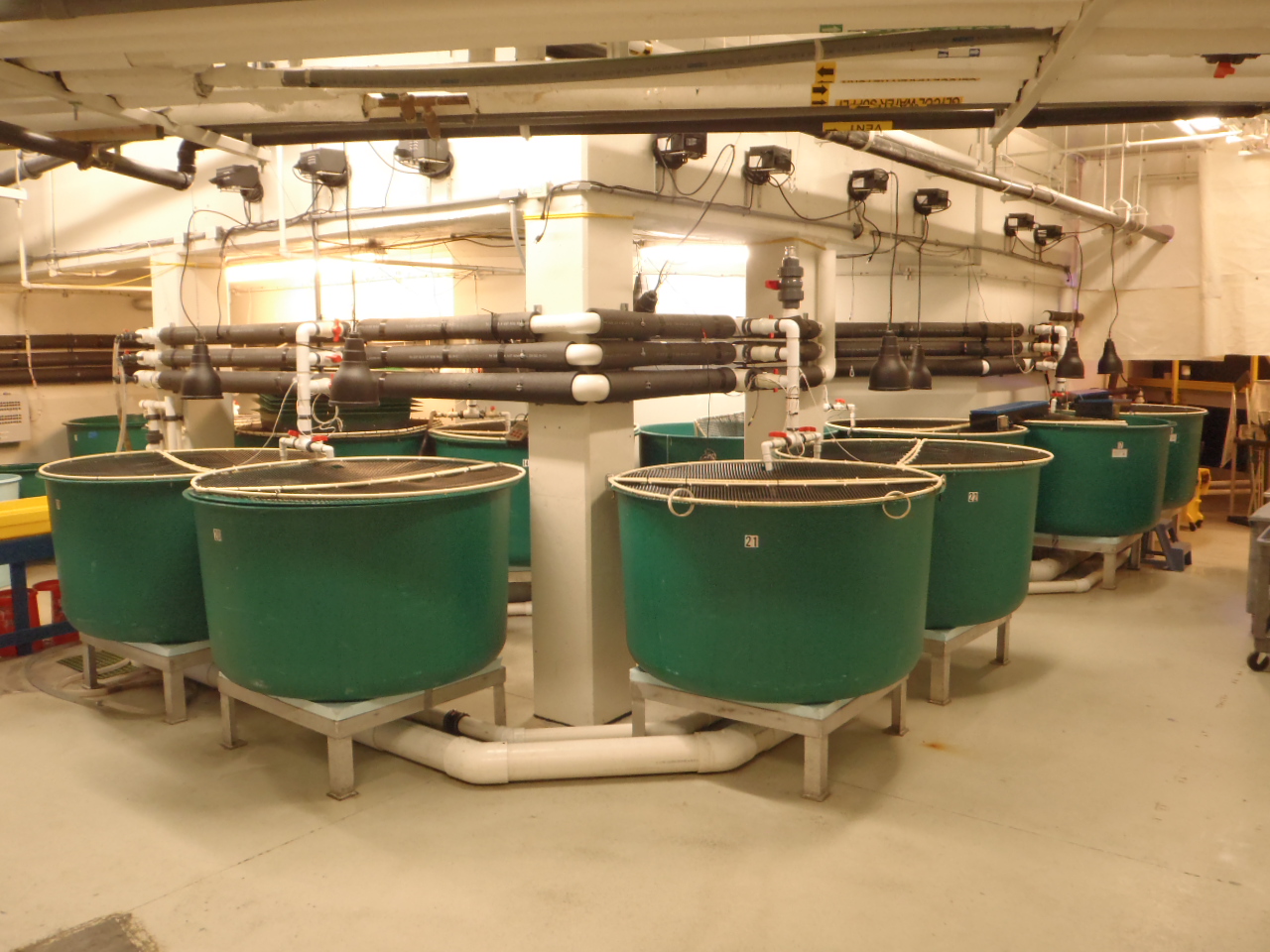
The CSEO works closely with the Scientific Advisory Committee (SAC) to periodically review research accomplishments, as well as programmatic research directions and strategies. Our current permanent research staff includes two in-house principal investigators, two affiliate scientists, two research associates, and several technical and research support staff. One of our principal investigators holds a research faculty positions at the University of Alaska Fairbanks (UAF). Our three center veterinarians also participate in many research activities. Additionally, our facilities offer research opportunities to post-doctoral researchers, graduate students, visiting scientists, and affiliate researchers and external collaborators. Over the years, we have hosted over 700 visiting scientists at our facility.
Our facility is located on the shore of the Gulf of Alaska in the North Pacific Ocean, with access to the Alaska marine environment from our back door. We are located next to the Seward Marine Center of the UAF School of Fisheries and Ocean Sciences, and the home port of the new global class ice-capable research vessel R/V Sikuliaq, operated by UAF. Our dry and wet indoor laboratories and our large outdoor research deck offer year-round access to either temperature-controlled or ambient-temperature research opportunities in cold marine or fresh water habitats. The laboratory facilities and equipment are outfitted to conduct research on marine animal physiology, biochemistry, molecular biology, energetics, and diet analysis. Our resident animal collection involves a diverse variety of marine organisms from tiny invertebrates to large Steller sea lions. Our largest resident, male Steller sea lion Pilot, peaks at well over 1700 lbs during the breeding season. The resident fauna offers scientists opportunities to study animals year-round in their natural salt water habitats and at ambient northern latitude temperatures. The combination of our location, in-house collection of marine mammals, seabirds, and fish, and our laboratory facilities offers scientists unique opportunities to study the marine life of the North.
